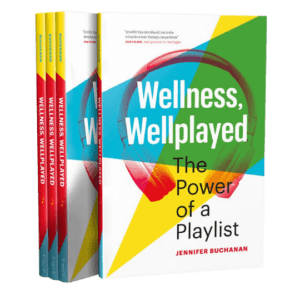Do you sometimes (or often) feel you need a boost at work?
The music industry has proof that you should listen to music while you work. In a study commissioned by the UK licensing organizations PPL and PRS for Music, 77 percent of businesses surveyed found that playing music in the workplace increased staff morale and improved the atmosphere, resulting in greater productivity.


1. Music is personal and differs for each person
Remember — the reasons for playing music at work are numerous and different for everyone. Keep in mind that not everyone feels more productive, creative, or inspired when listening to music. Some workers may instead feel distracted, stalled, or annoyed.
Music evaluation consultant and researcher Dr. Anneli Haake puts it this way, “The most common reasons for listening to music at work are to improve mood and relax. Music can also help employees to engage in work tasks, by blocking out distracting noise in the office.”
How to Use Music at Work
Here are a few guidelines to help your organization strengthen its people and increase the mood, focus, and productivity of its workforce with music.
- Outline the Benefits. Research and discuss the benefits of playing music in your work environment. For the employer, it may be boosting employee efficiency, expediting projects, and a climate of greater enthusiasm. For the staff member, it may mean sparking creativity or help in working through a project barrier.
- Identify Personal Preferences. Haake emphasizes that music choice and control play a large part in the benefits of music. ******Organize a forum where everyone can discuss their list of preferences. This will help the release of oxytocin (the “connection” and social-bonding hormone), provided you’re listening to music you like.
- Create Purposeful Playlists. Create a compilation of music that everyone is open to; this may take several days or weeks. Don’t rush. Try to focus on and enjoy the process as much as the results. Developing a productive playlist for two or more people can be challenging. Like all good work procedures and strategies, it takes time, and starts with being proactive instead of reactive. Identifying the diverse needs and preferences of the group you belong to will be a slow but rewarding process.
- Set Organizational Guidelines/Policy. To avoid possible misunderstandings, set guidelines around when music will be played and for how long. Make sure everyone has had a chance to contribute to the playlists your group will be listening to.
- Participate in practical and goal-driven, music-based exercises. One of the benefits of music at work is the way it can help you connect with your teammates. You may decide to allow individual team members to select the music on a rotating basis, so for one whole day, the team listens only to songs chosen by that one person. This can help to deepen relationships and foster a sense of connection among coworkers.


In a culturally diverse team, music can improve cross-cultural connections because it fosters cohesion and strengthens social bonds. According to music psychologist Stefan Koelsch, music connects us by affecting areas of the brain involved in empathy, trust, and cooperation. According to another study, music increases contact, coordination, and cooperation because, when we make an effort to sync with others, we tend to feel more connected and uplifted toward them. So, although music can’t solve all work-related problems, it definitely helps people feel more connected, both to themselves and to others.
Music Etiquette in the Workplace
Here are a few suggestions for when to use music at work:
- for the duration of everyone’s set lunch time e.g., 11:30 a.m. to 1:30 p.m., to add a social component to lunch.
- the last hour of each day to pick up the mood and to signal the end of a successful day, thus promoting a boost in enthusiasm and a feeling of relaxation prior to going home.
- to celebrate various occasions, e.g., for one hour of someone’s birthday, allow the birthday person or their co-workers to choose a playlist representing the birthday person.
- throughout the day at a low volume, with increased volume during brainstorming sessions.
- through individual headphones only, allowing people to choose the music that makes them feel most vibrant at work.
- during a presentation or when you want to capture a specific mood or give a big launch to a new product or idea.


Building Meaningful Connections
Making music work at work is not always a smooth process. This is possibly the most challenging environment for finding musical common ground — which is one of the reasons why, in most work environments, people listening to music are usually doing so through their earphones or headphones. They’re not sharing their music because of all the challenges we’ve just been discussing, and the fact that our musical tastes are so incredibly personal and preferential.
You might be interested to know that, in one study from the University of Illinois, researchers found that listening to music in all types of work settings increased work output by 6.3 percent. According to Dr. Teresa Lesiuk, people who listen to music complete their tasks more quickly and come up with better ideas than those who don’t. “When you’re stressed,” she says, “you might make a decision more hastily; you have a very narrow focus of attention. When you’re in a positive mood, you’re able to take in more options.”
So what does that tell us? That there’s no real answer or right way to make music work at work. It depends. It’s going to vary according to your work environment and the people you’re working with. Workplaces around the world have been craving the energy that only music can deliver. So when you find your team’s music jam, you’ll find yourselves starting each workday on a high note and energized.












One Response